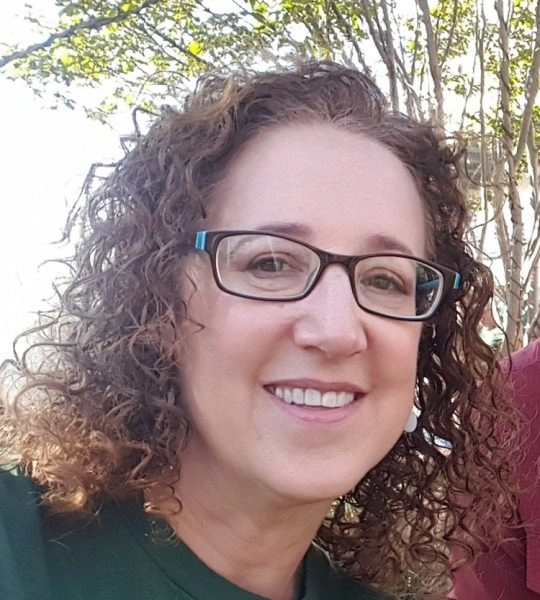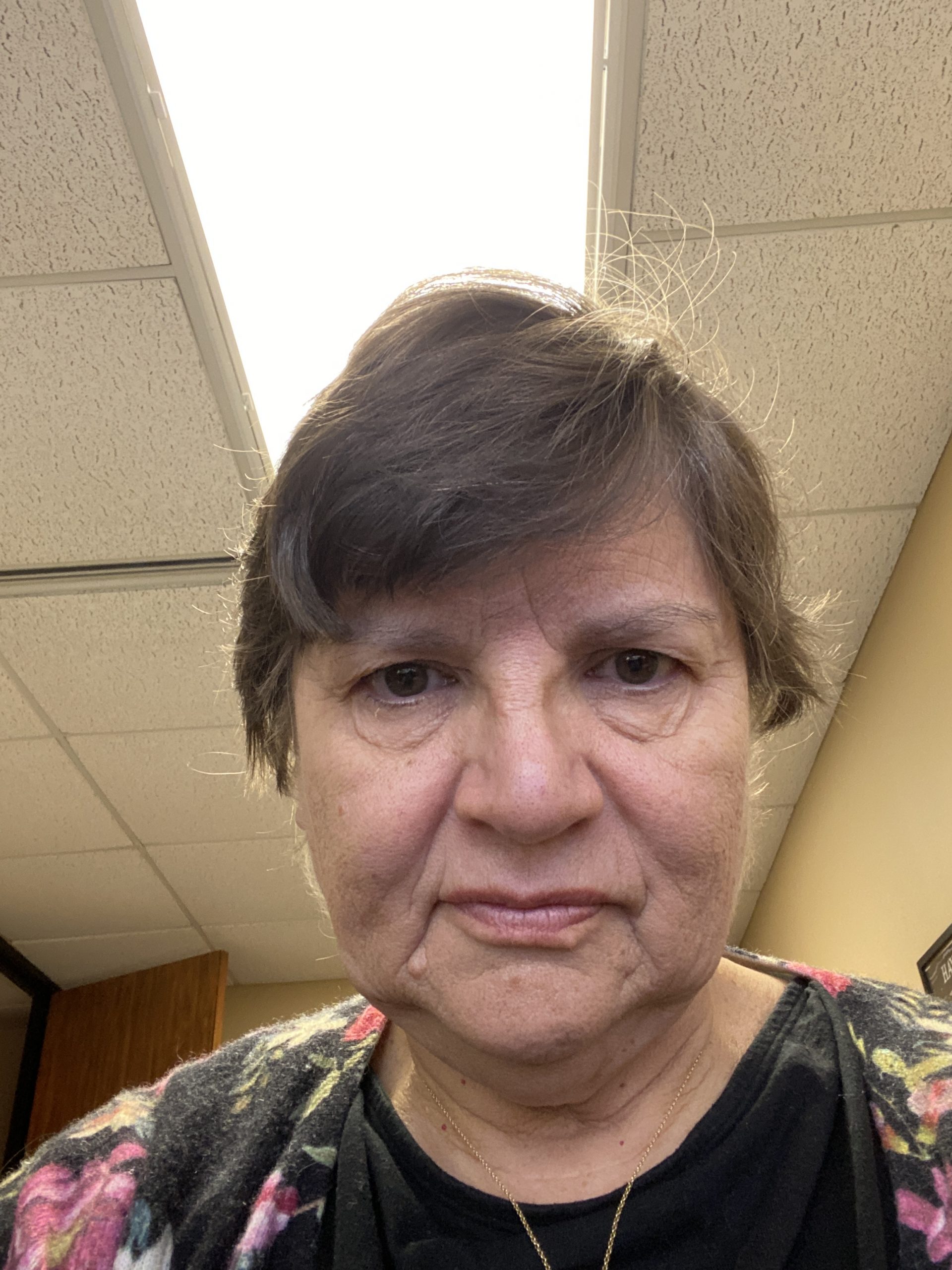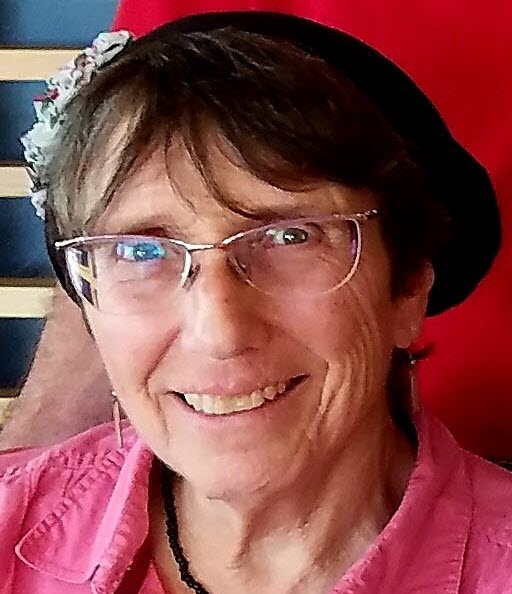Sukkah 22
מַתְנִי׳ סוּכָּה הַמְדוּבְלֶלֶת וְשֶׁצִּילָּתָהּ מְרוּבָּה מֵחַמָּתָהּ — כְּשֵׁרָה. הַמְעוּבָּה כְּמִין בַּיִת, אַף עַל פִּי שֶׁאֵין הַכּוֹכָבִים נִרְאִין מִתּוֹכָהּ — כְּשֵׁרָה.
MISHNA: A sukka that is meduvlelet and whose shade exceeds its sunlight is fit. A sukka whose roofing is thick like a house of sorts, even though it is so thick that the stars cannot be seen from within it, is fit.
גְּמָ׳ מַאי מְדוּבְלֶלֶת? אָמַר רַב: סוּכָּה עֲנִיָּיה. וּשְׁמוּאֵל אָמַר: קָנֶה עוֹלֶה וְקָנֶה יוֹרֵד.
GEMARA: The Gemara asks: What is the meaning of meduvlelet? Rav said: It means an impoverished sukka, i.e., a sukka whose roofing is sparse, although at no point in the roofing is there a gap of three handbreadths. And Shmuel said: It means that the roofing is aligned with one reed ascending and one reed descending. There are two layers of roofing, with each reed on the upper layer situated directly above the space between each reed on the lower level.
רַב תָּנֵי חֲדָא, וּשְׁמוּאֵל תָּנֵי תַּרְתֵּי. רַב תָּנֵי חֲדָא: סוּכָּה מְדוּבְלֶלֶת, מַאי מְדוּבְלֶלֶת — מְדוּלְדֶּלֶת, שֶׁצִּילָּתָהּ מְרוּבָּה מֵחַמָּתָהּ — כְּשֵׁרָה. וּשְׁמוּאֵל תָּנֵי תַּרְתֵּי: מַאי מְדוּבְלֶלֶת — מְבוּלְבֶּלֶת, וְתַרְתֵּי קָתָנֵי: סוּכָּה מְבוּלְבֶּלֶת כְּשֵׁרָה, וְצִילָּתָהּ מְרוּבָּה מֵחַמָּתָהּ — כְּשֵׁרָה.
The Gemara explains: Rav taught the first clause in the mishna as one halakha, and Shmuel taught that clause as two halakhot. Rav taught one halakha: The halakha of a sukka meduvlelet. And what is a sukka meduvlelet? It is a sparse sukka. Nevertheless, as long as the shade exceeds the sunlight the sukka is fit. And Shmuel taught two halakhot. What is a sukka meduvlelet? It is a disordered sukka. And he teaches two halakhot: A disordered sukka is fit, and one whose shade exceeds its sunlight is fit.
אָמַר אַבָּיֵי: לֹא שָׁנוּ, אֶלָּא שֶׁאֵין בֵּין זֶה לָזֶה שְׁלֹשָׁה טְפָחִים, אֲבָל יֵשׁ בֵּין זֶה לָזֶה שְׁלֹשָׁה טְפָחִים — פְּסוּלָה. אָמַר רָבָא: אֲפִילּוּ יֵשׁ בֵּין זֶה לָזֶה שְׁלֹשָׁה טְפָחִים נָמֵי לָא אֲמַרַן, אֶלָּא שֶׁאֵין בְּגַגּוֹ טֶפַח, אֲבָל יֵשׁ בְּגַגּוֹ טֶפַח — כְּשֵׁרָה. דְּאָמְרִינַן: חֲבוֹט רְמִי.
Abaye said: They taught that a sukka with two layers of roofing is fit only in a case where there is not a gap of at least three handbreadths between the top and bottom layers. However, if there is a gap of three handbreadths between them it is unfit. Rava said: Even if there is a gap of three handbreadths between them, we say that the two layers of roofing are not considered joined only in a case where there is not the width of a handbreadth in its upper roof. However, if there is the width of a handbreadth in its upper roof, even if the gap between them is three handbreadths, the sukka is fit, because we say that the principle: Lower and cast down the upper level of the sukka roofing down to the level of the lower sukka roofing, applies here.
אָמַר רָבָא: מְנָא אָמֵינָא לַהּ דְּכִי אִית בֵּיהּ טֶפַח אָמְרִינַן חֲבוֹט רְמִי, וְכִי לֵית בֵּיהּ לָא אָמְרִינַן חֲבוֹט רְמִי? דִּתְנַן: קוֹרוֹת הַבַּיִת וְהָעֲלִיָּיה שֶׁאֵין עֲלֵיהֶם מַעֲזִיבָה, וְהֵן מְכֻוּוֹנוֹת טוּמְאָה תַּחַת אַחַת מֵהֶן — תַּחְתֶּיהָ טָמֵא.
Rava said: From where do I learn to say that when there is a handbreadth of width in its roof, we say that the principle lower and cast applies, and when there is not a handbreadth in its roof, we do not say that the principle lower and cast applies? Rava learns this from the halakha of impurity imparted by a corpse, as we learned in a mishna: With regard to the boards of the ceiling of the first floor of the house and of the second story that do not have plaster on them, so that each of the boards is considered a separate entity, and the boards of each are aligned so that the boards of the ceiling of the second story are directly above the boards of the house: If there is a source of ritual impurity imparted by a corpse beneath one of the lower boards, any object that is directly beneath that board is rendered impure by means of a tent over a corpse. However, any object that is above the board or off to the side remains pure.
בֵּין הַתַּחְתּוֹנָה לָעֶלְיוֹנָה — בֵּינֵיהֶן טָמֵא, עַל גַּבֵּי הָעֶלְיוֹנָה — כְּנֶגְדָּהּ עַד לָרָקִיעַ טָמֵא. הָיוּ הָעֶלְיוֹנוֹת כְּבֵין הַתַּחְתּוֹנוֹת, טוּמְאָה תַּחְתֵּיהֶן — תַּחַת כּוּלָּן טָמֵא. עַל גַּבֵּיהֶן — כְּנֶגְדָּן עַד לָרָקִיעַ טָמֵא.
If the source of impurity is in the airspace of the second story between the lower and upper boards, any object between the two boards is impure; however, any object beneath the lower board or above the upper board or off to the side remains pure. If the source of impurity is atop the upper board, any object aligned with the source of impurity even up to the heavens is impure. However, if the upper boards are spaced between the lower boards, if the source of impurity is beneath any of the boards within the house, any object that is beneath any of the boards is impure, as the legal status of the roof is as though the upper boards were lowered to the level of the lower boards, and the result is one continuous ceiling. If the source of impurity is above them, i.e., above the top boards, any object aligned with the source of impurity even up to the heavens is impure.
וְתָנֵי עֲלַהּ: בַּמֶּה דְּבָרִים אֲמוּרִים — בִּזְמַן שֶׁיֵּשׁ בָּהֶן טֶפַח וּבֵינֵיהֶן פּוֹתֵחַ טֶפַח, אֲבָל אֵין בֵּינֵיהֶן פּוֹתֵחַ טֶפַח, טוּמְאָה תַּחַת אַחַת מֵהֶן — תַּחְתֶּיהָ טָמֵא, בֵּינֵיהֶן וְעַל גַּבֵּיהֶן — טָהוֹר. אַלְמָא כִּי אִית בֵּיהּ טֶפַח, אָמְרִינַן חֲבוֹט רְמִי, וְכִי לֵית בֵּיהּ טֶפַח, לָא אָמְרִינַן חֲבוֹט רְמִי! שְׁמַע מִינַּהּ.
And it is taught in the Tosefta elaborating on this mishna: In what case is this statement said? It is only when these boards have the width of a handbreadth, and between them is the space of a handbreadth. However, if the boards are close together and there isn’t even the space of a handbreadth between them, then if the source of impurity is directly beneath one of the boards, only objects in the space beneath it is impure, while an object between the two layers of boards and atop them remains pure. Apparently, when there is a handbreadth in the upper layer, we say lower and cast the upper sukka roofing down to the level of the lower sukka roofing. And when there is not even a handbreadth in the upper layer, we do not say lower and cast the upper sukka roofing down. Indeed, conclude from here that this is the halakha.
יָתֵיב רַב כָּהֲנָא וְקָאָמַר לְהָא שְׁמַעְתָּא. אֲמַר לֵיהּ רַב אָשֵׁי לְרַב כָּהֲנָא: וְכׇל הֵיכָא דְּלֵית בֵּיהּ טֶפַח לָא אָמְרִינַן חֲבוֹט רְמִי?
The Gemara relates: Rav Kahana sat in the study hall and stated this halakha of Rava, that in a case where the upper sukka roofing is a handbreadth wide, even if the gap between the two layers of roofing is greater than three handbreadths, they are considered attached. Rav Ashi said to Rav Kahana: Is it so that wherever there is not the width of a handbreadth, we do not say lower and cast?
וְהָא תַּנְיָא: קוֹרָה הַיּוֹצְאָה מִכּוֹתֶל זֶה וְאֵינָהּ נוֹגַעַת בְּכוֹתֶל זֶה, וְכֵן שְׁתֵּי קוֹרוֹת אַחַת יוֹצְאָה מִכּוֹתֶל זֶה וְאַחַת יוֹצְאָה מִכּוֹתֶל זֶה וְאֵינָן נוֹגְעוֹת זוֹ בָּזוֹ, פָּחוֹת מִשְּׁלֹשָׁה — אֵינוֹ צָרִיךְ לְהָבִיא קוֹרָה אַחֶרֶת, שְׁלֹשָׁה — צָרִיךְ לְהָבִיא קוֹרָה אַחֶרֶת.
Isn’t it taught in the Tosefta with regard to the halakhot of the merging of alleyways that one of the means of rendering carrying in a closed alleyway permitted on Shabbat is by placing a beam one handbreadth wide over the entrance of the alleyway within twenty cubits but no less than ten handbreadths off the ground? With regard to a cross beam that projects from this wall of an alleyway but does not touch the other opposite wall, and similarly, with regard to two cross beams, one projecting from this wall and one projecting from the other opposite wall, and they do not touch each other, if there is a gap of less than three handbreadths between the beam and the wall, or between the two beams respectively, one need not bring another cross beam to render the alleyway fit for a person to carry within it. This is because they are considered joined based on the principle of lavud. However, if there is a gap of three handbreadths, one must bring another cross beam.
רַבָּן שִׁמְעוֹן בֶּן גַּמְלִיאֵל אוֹמֵר:
However, Rabban Shimon ben Gamliel, who holds that the principle of lavud applies to a gap of up to four handbreadths wide, says:
פָּחוֹת מֵאַרְבָּעָה — אֵין צָרִיךְ לְהָבִיא קוֹרָה אַחֶרֶת, אַרְבָּעָה — צָרִיךְ לְהָבִיא קוֹרָה אַחֶרֶת.
If there is a gap of less than four handbreadths, one need not bring another cross beam. However, if there is a gap of four handbreadths, one must bring another cross beam.
וְכֵן שְׁתֵּי קוֹרוֹת הַמַּתְאִימוֹת, לֹא בָּזוֹ כְּדֵי לְקַבֵּל אָרִיחַ וְלֹא בָּזוֹ כְּדֵי לְקַבֵּל אָרִיחַ, אִם מְקַבְּלוֹת אָרִיחַ לְרׇחְבּוֹ טֶפַח — אֵין צָרִיךְ לְהָבִיא קוֹרָה אַחֶרֶת, וְאִם לָאו — צָרִיךְ לְהָבִיא קוֹרָה אַחֶרֶת,
And similarly, if two parallel, extremely narrow cross beams are placed alongside each other, even though there is not sufficient width in this beam in order to receive and support a small brick, and there is not sufficient width in that beam in order to receive and support a small brick, if the two beams together can receive a small brick along its handbreadth width, one need not bring another cross beam to render the alleyway fit for one to carry within it. But if not, one is required to bring another cross beam.
רַבָּן שִׁמְעוֹן בֶּן גַּמְלִיאֵל אוֹמֵר: אִם מְקַבְּלוֹת אָרִיחַ לְאׇרְכּוֹ שְׁלֹשָׁה טְפָחִים — אֵין צָרִיךְ לְהָבִיא קוֹרָה אַחֶרֶת. וְאִם לָאו — צָרִיךְ לְהָבִיא קוֹרָה אַחֶרֶת.
Rabban Shimon ben Gamliel says: If the two cross beams can receive a small brick along its length, which is three handbreadths, one need not bring another cross beam, but if not, one must bring another cross beam.
הָיוּ אַחַת לְמַעְלָה וְאַחַת לְמַטָּה, רַבִּי יוֹסֵי בְּרַבִּי יְהוּדָה אוֹמֵר: רוֹאִין הָעֶלְיוֹנָה כְּאִילּוּ הִיא לְמַטָּה, וְאֶת הַתַּחְתּוֹנָה כְּאִילּוּ הִיא לְמַעְלָה. וּבִלְבַד שֶׁלֹּא תְּהֵא עֶלְיוֹנָה לְמַעְלָה מֵעֶשְׂרִים אַמָּה, וְהַתַּחְתּוֹנָה לְמַטָּה מֵעֲשָׂרָה. הָא זֶה וְזֶה בְּתוֹךְ עֶשְׂרִים — אָמְרִינַן חֲבוֹט רְמִי אַף עַל גַּב דְּלֵית בֵּיהּ טֶפַח!
Rabbi Yosei, son of Rabbi Yehuda, says: If these two narrow cross beams are placed at different heights, one above and one below, one considers the upper one as though it were below, and the lower one as though it were above, i.e., close together. If the two together are capable of supporting a small brick, they render the alleyway fit for one to carry within it, although they are not actually close to each other, provided that the upper cross beam is not above twenty cubits off the ground and the lower one is not below ten handbreadths off the ground, between which a cross beam renders an alleyway fit for one to carry within it. By inference, if both this beam and that beam are within twenty cubits, we say that the principle: Lower and cast the upper beam down even though there is not the width of a handbreadth in the upper beam. This is difficult according to Rava’s opinion, as he holds that the principle: Lower and cast, does not apply when the width of the upper crossbeam is less than a handbreadth.
אֲמַר לֵיהּ, תָּרֵיץ וְאֵימָא הָכִי: וּבִלְבַד שֶׁלֹּא תְּהֵא עֶלְיוֹנָה לְמַעְלָה מֵעֶשְׂרִים, אֶלָּא בְּתוֹךְ עֶשְׂרִים, וְהַתַּחְתּוֹנָה סְמוּכָה לָהּ בְּפָחוֹת מִשְּׁלֹשָׁה. אִי נָמֵי: בִּלְבַד שֶׁלֹּא תְּהֵא תַּחְתּוֹנָה לְמַטָּה מֵעֲשָׂרָה, אֶלָּא לְמַעְלָה מֵעֲשָׂרָה, וְעֶלְיוֹנָה סְמוּכָה לָהּ בְּפָחוֹת מִשְּׁלֹשָׁה, אֲבָל שְׁלֹשָׁה, כֵּיוָן דְּלֵית בֵּיהּ טֶפַח — לָא אָמְרִינַן חֲבוֹט רְמִי.
Rav Kahana said to him: Interpret the baraita and say as follows: Provided that the upper beam is not above twenty cubits but rather within twenty cubits and the lower one is adjacent to it, less than three handbreadths from it, as in that case they are joined due to the principle of lavud and not the principle of lower and cast. Alternatively, interpret the baraita as follows: Provided that the lower beam is not below ten handbreadths but rather above ten handbreadths and the upper beam is adjacent to it, less than three handbreadths from it. However, if the distance between the beams is three handbreadths, since there is not the width of one handbreadth in the beam, we do not say: Lower and cast the upper beam, and each beam is considered on its own.
וְשֶׁצִּילָּתָהּ מְרוּבָּה מֵחַמָּתָהּ כְּשֵׁרָה. הָא כִּי הֲדָדֵי — פְּסוּלָה. וְהָא תְּנַן בְּאִידַּךְ פִּירְקִין: וְשֶׁחֲמָתָהּ מְרוּבָּה מִצִּילָּתָהּ פְּסוּלָה, הָא כִּי הֲדָדֵי — כְּשֵׁרָה!
§ The mishna continues: A sukka whose shade exceeds its sunlight is fit. From the formulation of the mishna, it can be inferred that if its shade and sunlight are equal, the sukka is unfit. The Gemara asks: But didn’t we learn in a mishna in another chapter in this tractate: A sukka whose sunlight exceeds its shade is unfit. From the formulation of that mishna it can be inferred that if its sunlight and shade are equal, the sukka is fit. The inferences of the two mishnayot are contradictory.
לָא קַשְׁיָא: כָּאן מִלְּמַעְלָה, כָּאן מִלְּמַטָּה. אָמַר רַב פָּפָּא, הַיְינוּ דְּאָמְרִי אִינָשֵׁי: כְּזוּזָא מִלְּעֵיל, כְּאִיסְתְּרָא מִלְּתַחַת.
The Gemara answers: This is not difficult. Here, where the inference was that when the sunlight and shade are equal the sukka is unfit, it is referring to the ratio of shade to sunlight from above, in the sukka roofing itself; and there, where the inference was that when the sunlight and shade are equal the sukka is fit, it is referring to the ratio of shade to sunlight from below, on the sukka floor. The two inferences are not contradictory, as the lower in the sukka one observes the light, the more diffused it is. Therefore, if the shade and the sunlight are equal on the floor of the sukka, clearly, the roofing is sufficiently dense and exceeds the gaps. Rav Pappa said: That is the meaning of the folk saying with regard to light: Like a zuz coin above, like an istera coin below.
מְעוּבָּה כְּמִין בַּיִת. תָּנוּ רַבָּנַן: הַמְעוּבָּה כְּמִין בַּיִת, אַף עַל פִּי שֶׁאֵין הַכּוֹכָבִים נִרְאִין מִתּוֹכָהּ — כְּשֵׁרָה. אֵין כּוֹכְבֵי חַמָּה נִרְאִין מִתּוֹכָהּ — בֵּית שַׁמַּאי פּוֹסְלִין וּבֵית הִלֵּל מַכְשִׁירִין.
The mishna continues: A sukka whose roofing is thick like a type of house is fit. The Sages taught in a baraita: With regard to a sukka whose roofing is thick like a type of house, although it is so dense that the stars are not visible from within it, the sukka is fit. However, if it is so thick that the rays of the sun are also not visible from within it, Beit Shammai deem the sukka unfit and Beit Hillel deem it fit.
מַתְנִי׳ הָעוֹשֶׂה סוּכָּתוֹ בְּרֹאשׁ הָעֲגָלָה אוֹ בְּרֹאשׁ הַסְּפִינָה — כְּשֵׁרָה, וְעוֹלִין לָהּ בְּיוֹם טוֹב. בְּרֹאשׁ הָאִילָן אוֹ עַל גַּבֵּי גָּמָל — כְּשֵׁרָה, וְאֵין עוֹלִין לָהּ בְּיוֹם טוֹב.
MISHNA: In the case of one who establishes his sukka at the top of the wagon or at the top of the ship, although it is portable it is fit, as it is sufficient for a sukka to be a temporary residence. And one may ascend and enter it even on the first Festival day. In the case of one who establishes his sukka at the top of a tree or atop a camel, the sukka is fit, but one may not ascend and enter it on the first Festival day because the Sages prohibit climbing or using trees or animals on the Festival.
שְׁתַּיִם בָּאִילָן וְאַחַת בִּידֵי אָדָם, אוֹ שְׁתַּיִם בִּידֵי אָדָם וְאַחַת בָּאִילָן — כְּשֵׁרָה, וְאֵין עוֹלִין לָהּ בְּיוֹם טוֹב. שָׁלֹשׁ בִּידֵי אָדָם וְאַחַת בָּאִילָן — כְּשֵׁרָה, וְעוֹלִין לָהּ בְּיוֹם טוֹב.
If two of the walls of the sukka are in the tree and one is established on the ground by a person, or if two are established on the ground by a person and one is in the tree, the sukka is fit, but one may not ascend and enter it on the first Festival day because it is prohibited to use the tree. However, if three of the walls are established on the ground by a person and one is in the tree, then since it contains the minimum number of walls required, it is fit, and one may enter it on the first Festival day.























